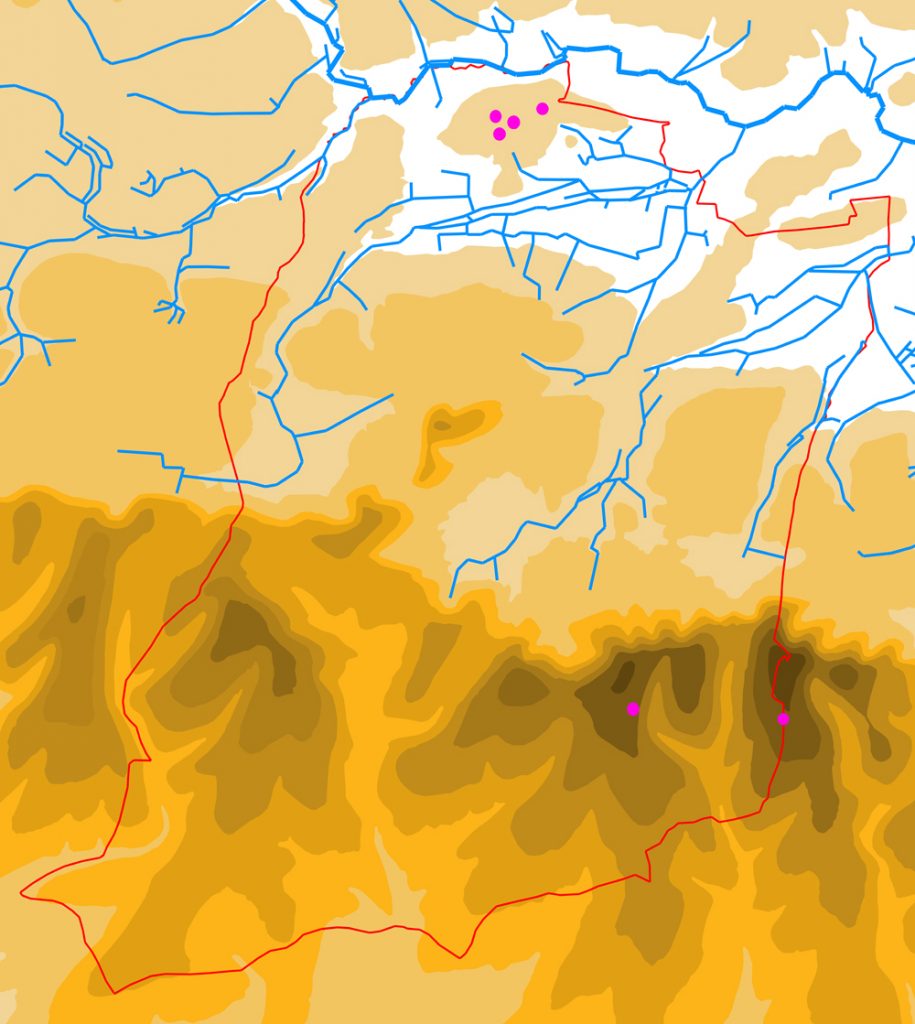For this blog I have decided to go back right to the beginning, to the very earliest evidence we have of people getting up to stuff in what was later to become the parish of Harting. The best source of information for these earlier periods is the data held within what is called the “Historic Environment Record” (HER). This database, and others like it, are held by the heritage departments of local authorities, usually at a County or Unitary Council level, but occasionally at District, as is the case for Chichester. Anyone is entitled to ask for the information they hold, free of charge if it is for private research. The entry point for the Chichester District Council HER can be found at: https://www.chichester.gov.uk/article/25592/Historic-Environment-Record-HER
While these databases hold a lot of information about the past, they are obviously limited by what has been reported to them, and that in turn is limited by what has been found. So there is a lot of information out there held by individuals who have never reported what they know or have found, and then there is a far greater amount of evidence that has never been found at all, but awaits either discovery (below the ground), or recognition (above the ground). So while HERs are a great central holding place for data (I would urge any of you who know things, or have found things, to get in touch with them to report it, so that we can all benefit from your knowledge), what they offer is, in their very nature, only very partial snapshot into the past.
The earliest phase of activity that our Harting HER data relates to is the Stone Age, since this is the first of the material-themed ages used to divide up our prehistoric past. The stone age is then sub-divided into the Paleolithic, Mesolithic and Neolithic. “Paleo” is Greek for “old”, “Meso” for “middle” and “Neo” for “new”, with “lithic” meaning “stone”. So essentially you have the “old stone age”, “middle stone age” and “new stone age”. And it was called the “Stone Age” for a reason – the reason being that things were made out of stone, rather than the metals that later ages are named after (Bronze and then Iron). And it is these stone objects, usually made of flint, that constitute pretty much the only evidence we find of the activities of those that made them, for their other possessions were of much less durable material, such as leather, wood and bone (fired clay objects, such as pot, were not known to them)
If I can oversimplify things somewhat, in the first two (the “old” & “middle”) people generally moved around a fair bit, not setting up shop for too long in any one place, as they travelled around looking for sustenance. In the last (the “new”, starting c. 4,000 BC) things settled down, with the development of farming, which tied people much more to one place. This inevitably means that the remains left behind by Paleolithic and Mesolithic visitors to Harting are rather less substantial and numerous than their later more settled successors. And this is reflected in the archaeological data we have.

The map above shows all the records that the HER holds for Paleolithic and Mesolithic activity in Harting parish – not much as you can see. The upper four dots on the map represent a Paleolithic flint handaxe, and three records of Mesolithic worked flints, found at West Heath sand quarry. The lower two dots are Mesolithic worked flints from Round Down and Beacon Hill.
But before we write the neighbourhood off as of little or no interest to our hunter-gatherer predecessors, we need to remember the comments I made earlier about the fragmentary nature of the evidence we hold. I would imagine that there are almost certainly many more Paleolithic and Mesolithic flints from Harting squirrelled away in people’s houses, sometimes perhaps unrecognised for what they are, that have been picked up on walks or while digging the ground (do get in touch if you wish to let me know of any, or just contact the HER). But there will also be a vast number of other flints still awaiting discovery. So taking all this into consideration, it would be very unwise to draw any conclusions about where people might have roamed in those far off ages based upon the six findspots recorded above. Although one point might be worth making, which is that, at least in Mesolithic times, our predecessors were wont to roam both down by the Rother and up on the Downs.
Next time I will move on to look at the last phase of the Stone Age (the Neolithic) and the beginnings of the metal ages (the Early Bronze Age – when barrows ruled the land).
Leave a Reply